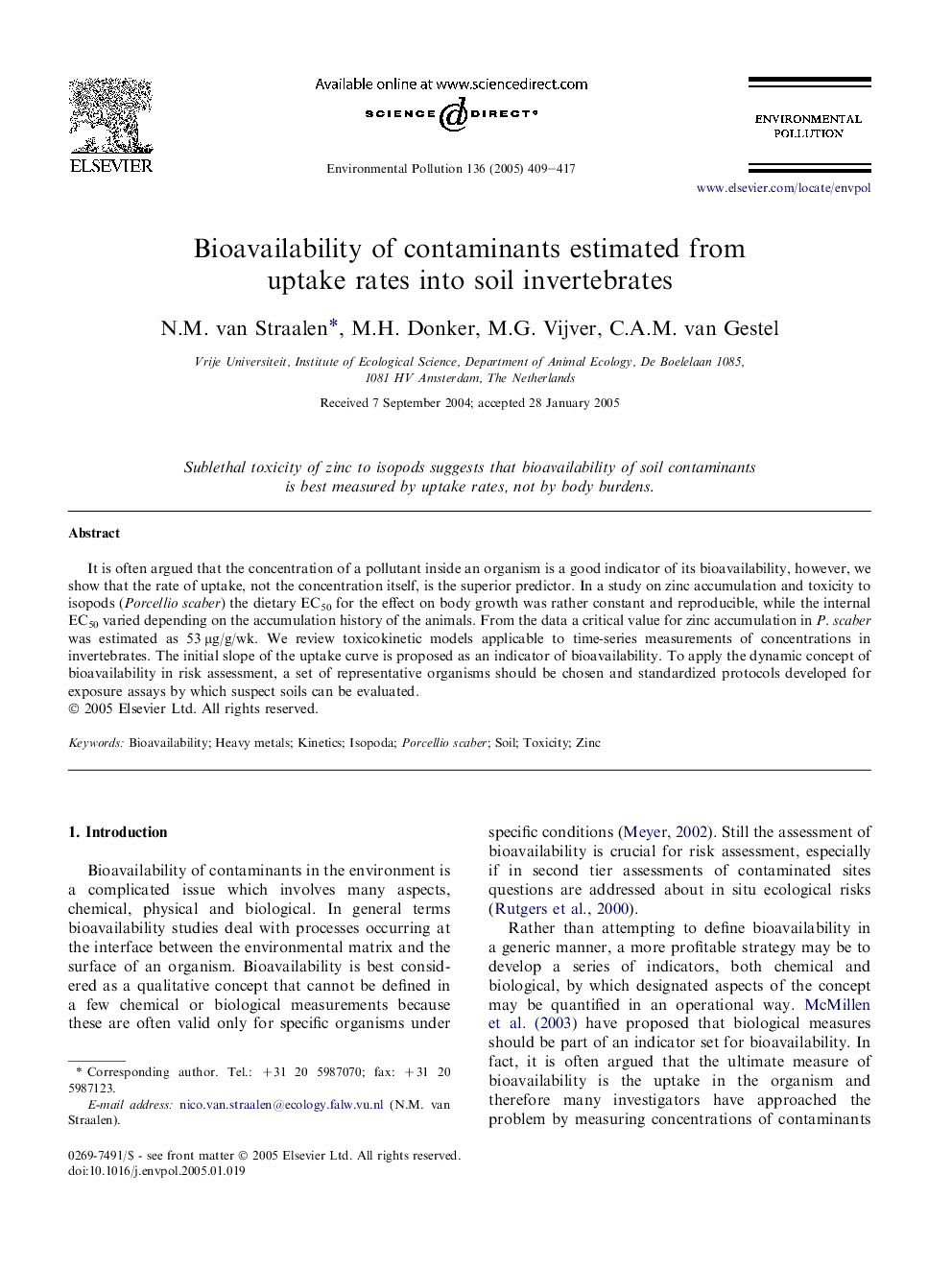| Article ID | Journal | Published Year | Pages | File Type |
|---|---|---|---|---|
| 9456241 | Environmental Pollution | 2005 | 9 Pages |
Abstract
It is often argued that the concentration of a pollutant inside an organism is a good indicator of its bioavailability, however, we show that the rate of uptake, not the concentration itself, is the superior predictor. In a study on zinc accumulation and toxicity to isopods (Porcellio scaber) the dietary EC50 for the effect on body growth was rather constant and reproducible, while the internal EC50 varied depending on the accumulation history of the animals. From the data a critical value for zinc accumulation in P. scaber was estimated as 53 μg/g/wk. We review toxicokinetic models applicable to time-series measurements of concentrations in invertebrates. The initial slope of the uptake curve is proposed as an indicator of bioavailability. To apply the dynamic concept of bioavailability in risk assessment, a set of representative organisms should be chosen and standardized protocols developed for exposure assays by which suspect soils can be evaluated.
Related Topics
Life Sciences
Environmental Science
Environmental Chemistry
Authors
N.M. van Straalen, M.H. Donker, M.G. Vijver, C.A.M. van Gestel,
